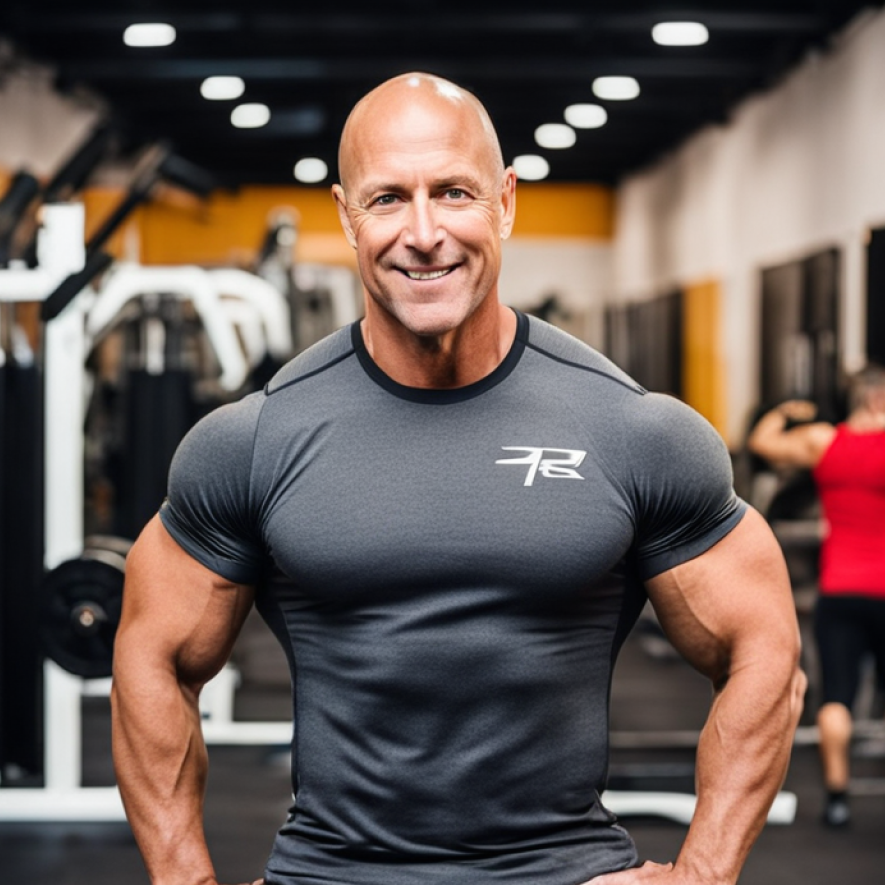Are you interested in developing stronger forearms capable of handling heavy weights and improving your grip? If that's the case incorporating dumbbell wrist curls into your forearm workout routine is essential. Dumbbell wrist curls rank among the most effective exercises for targeting and strengthening your forearm flexors, the muscles responsible for wrist and finger curling.
Throughout this article we will guide you on how to perform dumbbell wrist curls, outline the benefits they offer, suggest various variations to consider and highlight common mistakes you should steer clear of. By the time you finish reading this piece you will be fully equipped to integrate dumbbell wrist curls into your training regimen and reap the rewards they yield.
How to Do Dumbbell Wrist Curls Correctly
Here are the steps to perform dumbbell wrist curls with proper form:
- Grab a pair of dumbbells with an underhand grip (palms facing up) and sit on a bench or chair.
- Rest your forearms on your thighs, with your wrists hanging over your knees.
- Keeping your elbows still, curl your wrists up as high as you can, squeezing your forearms at the top.
- Slowly lower your wrists back to the starting position, feeling a stretch in your forearms.
- Repeat for the desired number of reps.
You can also do this exercise with one arm at a time, or with a barbell instead of dumbbells.
Benefits of Dumbbell Wrist Curls
Dumbbell wrist curls offer several benefits for your forearm development and strength:
- They isolate your forearm flexors, the muscles that help you curl your wrists and fingers. These muscles include the flexor carpi radialis, the flexor carpi ulnaris, the palmaris longus, the flexor digitorum superficialis, the flexor digitorum profundus, and the flexor pollicis longus.
- They improve your grip strength and endurance by forcing you to hold onto the weight throughout the movement. This can help you perform better in other exercises that require a strong grip, such as deadlifts, pull-ups, rows, and curls.
- They provide constant tension on your forearms by eliminating any momentum or cheating. This can help you stimulate more muscle fibers and growth in your forearms.
- They enable you to train each arm independently and correct any imbalances or weaknesses in your forearms. This can help you prevent injuries and improve your symmetry.
Variations of Dumbbell Wrist Curls
If you want to spice up your forearm workouts even more, you can try these variations of dumbbell wrist curls:
Dumbbell Reverse Wrist Curl
This is the opposite of the wrist curl. It targets the posterior forearm muscles, especially the extensor carpi radialis longus and brevis. To do it, grab a pair of dumbbells with an overhand grip (palms facing down) and follow the same steps as the wrist curl.
Dumbbell Hammer Curl
This is a variation of the biceps curl that also works the brachioradialis, a posterior forearm muscle that helps flex your elbow. To do it, grab a pair of dumbbells with a neutral grip (palms facing each other) and follow the same steps as the biceps curl, without rotating your wrists.
Dumbbell Zottman Curl
This is a combination of the wrist curl and the reverse wrist curl. It works both the anterior and posterior forearm muscles. To do it, grab a pair of dumbbells with an underhand grip (palms facing up) and curl them up to your shoulders. Then rotate your wrists so that your palms face down and lower the dumbbells back to the starting position.
Common Mistakes to Avoid
To get the most out of this exercise, make sure you avoid these common mistakes:
Using too much weight or momentum
You want to use a weight that challenges you but allows you to maintain good form and control throughout the movement. Don’t use momentum or swing the weight up or down. Focus on contracting your forearm muscles and moving slowly and deliberately.
Performing partial reps
You want to lift your wrists until they are parallel to the floor, no higher or lower. Going too high can cause shoulder impingement or activate your biceps more than your forearms. Going too low can reduce the tension on your forearms and make the exercise easier.
Shrugging your shoulders or rounding your back
You want to keep your shoulders down and back, and your chest up and out. This will help you isolate your forearms and prevent injury. Don’t shrug your shoulders or round your back as you lift or lower the weight.
Conclusion
Dumbbell wrist curls are a great exercise to add to your forearm workouts if you want to isolate and work your forearm flexors. They involve curling your wrists up and down with a pair of dumbbells, while resting your forearms on your thighs.
To do this exercise correctly, make sure you use a moderate weight, lift your wrists until they are parallel to the floor, and lower them slowly and under control. Avoid using too much weight or momentum, performing partial reps, or shrugging your shoulders or rounding your back.
You can also try some variations of this exercise, such as the dumbbell reverse wrist curl, the dumbbell hammer curl, or the dumbbell zottman curl. These will target different parts of your forearms and challenge them in different ways. Dumbbell wrist curls can help you build bigger and stronger forearms that will make you look and feel great.






